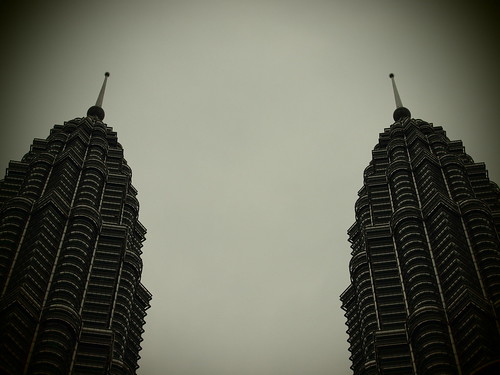
It was a treat to have both top badminton players, one who is at the peak of his prime and another who was a legend and now the coach, to come for an inspired chat at Maxis.
Datuk Lee Chong Wei and Misbun Sidek were greeted with loud applause by the audience, and were quick to adapt to the maniacally interested crowd. Attendance was packed to the brim, which was only mirrored by the Astronaut a few months back. Well, it was not often you can meet up close with Badminton's No.1!
There were two emcees for the evening, and both did a great job to enliven the high spirits of the audience. It was electrifying.
Just back from the Korean Open, which he lost to Peter Gade in the final, Chong Wei looked a bit jaded. Must be from the fatigue of the recent matches and travels. It's nothing to worry though, since Peter Gade lost two previous matches against him. Not bad, actually.
Being the Olympics silver medalist, which he lost out to Lin Dan, he described himself as a person who loved basketball. Well, a good thing his mother put some sense into him to play badminton. He is in a better spot now!!
The prime motivator to his current success is his coach cum mentor, Datuk Misbun Sidek. A cherished player by his own right, Misbun has been the strong guiding force to Chong Wei's achievement. He simply put the importance of trust between them that is the pinnacle of their success.
Misbun saw talent in Chong Wei about 8-9 years ago, and requested to have him under his direct tutelage. The move worked marvelously.
Now Chong Wei is at the top of badminton world!
What Misbun likes about Chong Wei's approach was he wants to listen; full trust to the mentor. And Misbun is a disciplinarian in which he got the full brunt from his late father. He needs a strong player to withstand his strict training regimes.
Any training regime put by Misbun, Chong Wei will do. Simple. It may sound old school, but with Misbun's understanding of the game both on and off-court, it is not surprising that Chong Wei can deliver. With proper guidance, real talent can be transformed into success.
Chong Wei's capability cannot be refuted, with his ability to do whatever the coach's will is something rare indeed. Himself a stroke player, some of the power drills requested during a match he will do. Change gameplans? No problem. Now that require a huge amount of skill. Kudos to Chong Wei!!

On a lighter note, Chong Wei did confess that his first motivator was his desire to own a car (which Misbun asked the first time about his badminton goals). That remark made the crowd burst into laughter. It may be funny, but it worked wonders.
Look at him now. He is at the top of the world!
More photos can be viewed HERE. (Click the link).
 Please click the image to see the full 8-kart sequence.
Please click the image to see the full 8-kart sequence.


 On a lighter note, Chong Wei did confess that his first motivator was his desire to own a car (which Misbun asked the first time about his badminton goals). That remark made the crowd burst into laughter. It may be funny, but it worked wonders.
On a lighter note, Chong Wei did confess that his first motivator was his desire to own a car (which Misbun asked the first time about his badminton goals). That remark made the crowd burst into laughter. It may be funny, but it worked wonders.


 Shooting in strong sunlight is a bit tough without a flash. Backlighting is a killer.
Shooting in strong sunlight is a bit tough without a flash. Backlighting is a killer. 















 I was quite keen to see the level of sharpness the 12.3MP can deliver when combined with one the best optics to offer.
I was quite keen to see the level of sharpness the 12.3MP can deliver when combined with one the best optics to offer.
























